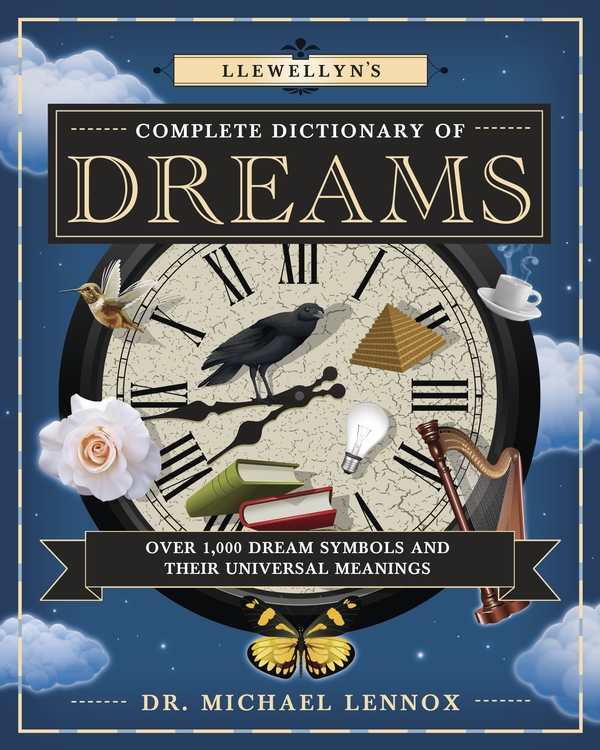Llewellyn's Complete Dictionary of Dreams
Over 1000 Dream Symbols and Their Unviersal Meanings
Micro-discussions of dream symbols reveal this book to be more than mere reference material; it will lead dreamers to learn something about their lives in the waking world.
Llewellyn’s Complete Dictionary of Dreams, by Michael Lennox, offers a straightforward index of over one thousand dream symbols and their meanings. But this is no Webster’s for the unconscious world: Lennox’s thoughtful explanations challenge dreamers to reach beyond the notion that dreams are the television shows that play in our sleep.
The volume begins with an insightful and tautly written introduction by Lennox, who, in addition to briefly sharing how he came to psychology and dream work, discusses three principles for how to use the dictionary effectively. Most importantly, Lennox asserts that there is no wrong way to interpret a dream, a claim that will encourage intrepid readers to continue the valuable inner work of investigating dreams—with or without the aid of a psychoanalyst. It is through the process of examination, the author believes, that one finds the greatest value in dream interpretation.
Symbols defined throughout the text are broad in scope. Classic dream scenarios—being chased, nakedness, drowning—are expertly discussed, as are more unusual dream images, such as bartenders, unicorns, roller skates, and oranges, to name a few. Dream symbols from the modern age, like cell phones, laptops, email, and UPC codes, are also included. These demonstrate the way dream images shift to fit the changing landscape of everyday life, even though their meanings reveal threads and fibers of the collective unconscious that remain the same across eras and cultures.
What truly sets this dream dictionary apart are Lennox’s thoughtful definitions. Each symbol—from abandonment to zoos—is given multiple sentences of explanation. It is through these micro-discussions, and through Lennox’s urging to “consider every element of the dream as a reflection of [one’s] own consciousness,” that the volume reveals itself to be more than mere reference material. Persistent reminders to consider the context of a dream image, coupled with detailed and open-ended definitions, will undoubtedly lead dreamers to learn something about their lives in the waking world.
Reviewed by
Margaret Fedder
Disclosure: This article is not an endorsement, but a review. The publisher of this book provided free copies of the book to have their book reviewed by a professional reviewer. No fee was paid by the publisher for this review. Foreword Reviews only recommends books that we love. Foreword Magazine, Inc. is disclosing this in accordance with the Federal Trade Commission’s 16 CFR, Part 255.

